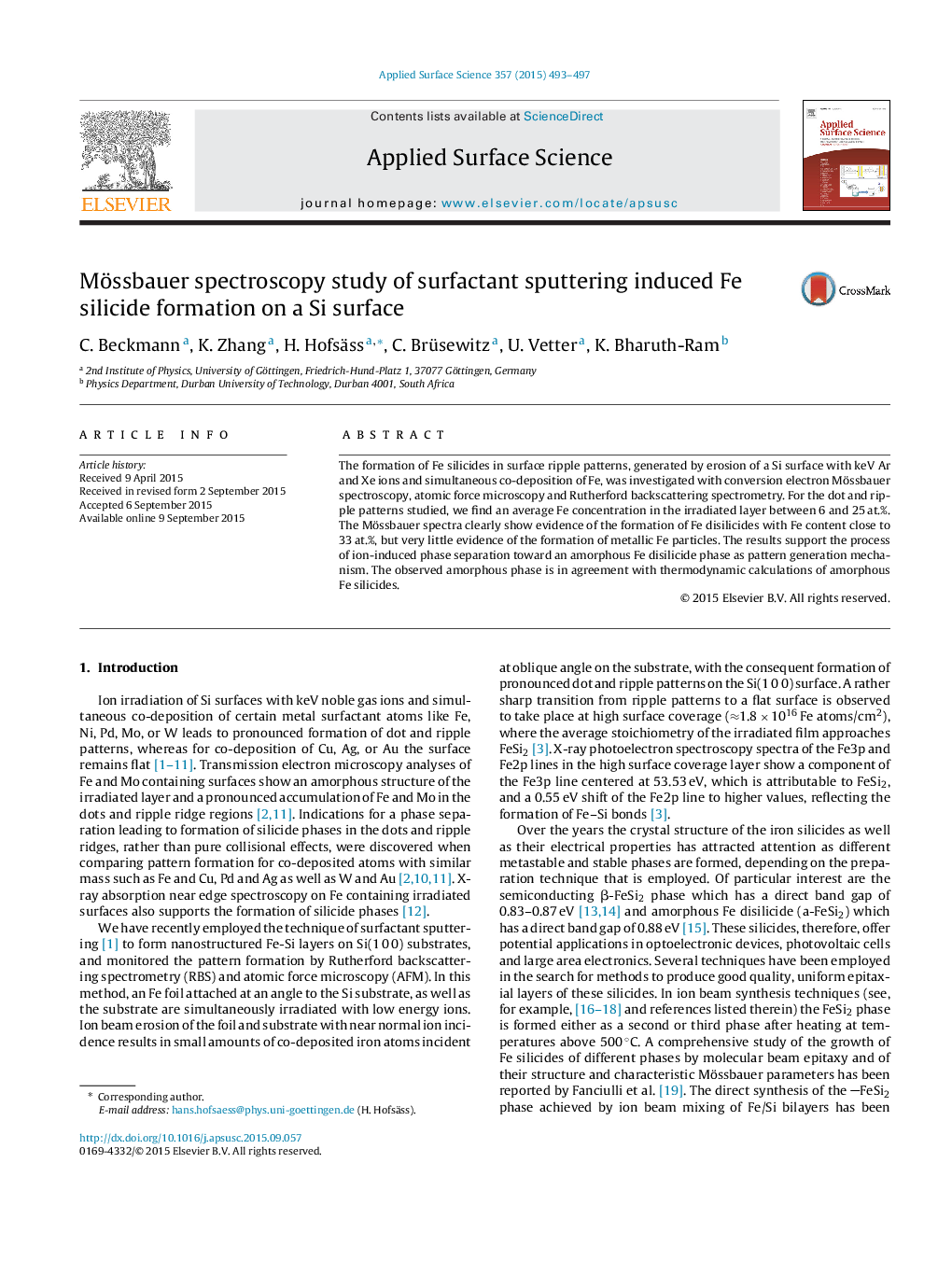| Article ID | Journal | Published Year | Pages | File Type |
|---|---|---|---|---|
| 5348358 | Applied Surface Science | 2015 | 5 Pages |
Abstract
The formation of Fe silicides in surface ripple patterns, generated by erosion of a Si surface with keV Ar and Xe ions and simultaneous co-deposition of Fe, was investigated with conversion electron Mössbauer spectroscopy, atomic force microscopy and Rutherford backscattering spectrometry. For the dot and ripple patterns studied, we find an average Fe concentration in the irradiated layer between 6 and 25Â at.%. The Mössbauer spectra clearly show evidence of the formation of Fe disilicides with Fe content close to 33Â at.%, but very little evidence of the formation of metallic Fe particles. The results support the process of ion-induced phase separation toward an amorphous Fe disilicide phase as pattern generation mechanism. The observed amorphous phase is in agreement with thermodynamic calculations of amorphous Fe silicides.
Related Topics
Physical Sciences and Engineering
Chemistry
Physical and Theoretical Chemistry
Authors
C. Beckmann, K. Zhang, H. Hofsäss, C. Brüsewitz, U. Vetter, K. Bharuth-Ram,
